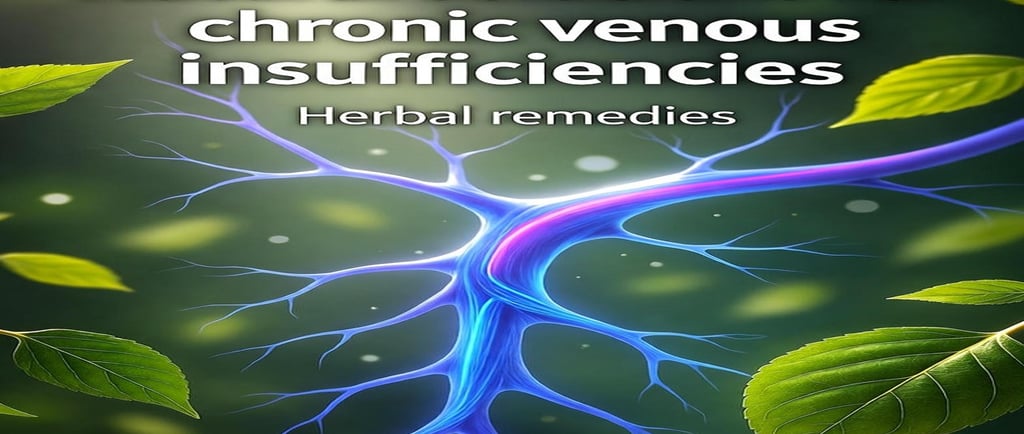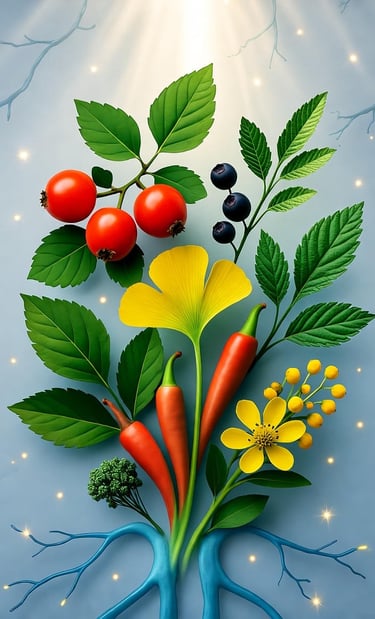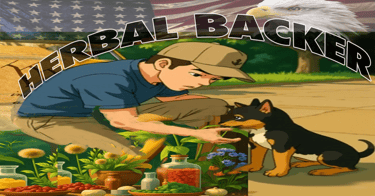Chronic Venous Insufficiency Natural Solutions
Chronic Venous Insufficiency (CVI), often referred to as Chronic Vascular Insufficiency, is a progressive vascular disorder that affects the veins, particularly in the lower extremities like the legs and ankles. It occurs when the one-way valves within the veins—designed to prevent blood from flowing backward—become damaged or weakened, leading to improper blood return to the heart.
10/5/20256 min read


Chronic Venous Insufficiency Natural Solutions
Introduction to Chronic Venous Insufficiency (CVI)
Chronic Venous Insufficiency (CVI), often referred to as Chronic Vascular Insufficiency, is a progressive vascular disorder that affects the veins, particularly in the lower extremities like the legs and ankles. It occurs when the one-way valves within the veins—designed to prevent blood from flowing backward—become damaged or weakened, leading to improper blood return to the heart. Instead, blood pools in the veins due to gravity, causing increased pressure (known as venous hypertension) and a cascade of uncomfortable and potentially serious symptoms.
This condition is far from rare; it impacts millions worldwide, with prevalence rising with age, affecting up to 40% of adults over 50 in some populations. Women are disproportionately affected due to hormonal influences during pregnancy, menopause, or oral contraceptive use, while men may experience it later in life from occupational factors like prolonged standing. The primary causes stem from venous wall damage or valve incompetence, often triggered by:
Deep Vein Thrombosis (DVT): A blood clot in deep leg veins that scars and obstructs flow, leading to post-thrombotic syndrome in up to 50% of cases.
Varicose Veins: Enlarged, twisted veins that signal early valve failure, exacerbating pooling.
Lifestyle and Risk Factors: Obesity increases abdominal pressure on veins; sedentary behavior weakens calf muscles that act as a "pump" for venous return; smoking damages vessel walls; and a family history of venous disease heightens genetic predisposition.
Symptoms typically develop gradually and worsen with prolonged standing or sitting. Early signs include a dull ache, heaviness, or cramping in the legs, often accompanied by restless legs or itching. As CVI advances, swelling (edema) becomes prominent, especially around the ankles, due to fluid leakage from pressurized veins into surrounding tissues. Skin changes follow: discoloration (brownish pigmentation from hemosiderin deposits), dryness, eczema-like dermatitis, or even ulceration in severe cases, where open sores form near the ankles and heal poorly. Complications can include infections, chronic pain, reduced mobility, and in rare instances, pulmonary embolism if clots form.
Diagnosis involves physical exams, Doppler ultrasound to assess valve function and blood flow, and sometimes venography for detailed imaging. Conventional treatments focus on symptom management: compression stockings to aid venous return, leg elevation, exercise to boost circulation, and medications like diuretics or venotonics. In advanced stages, procedures such as sclerotherapy, endovenous ablation, or surgery may be necessary. However, many seek natural alternatives to complement these approaches, emphasizing herbs that target vascular tone, inflammation, and circulation. While not a cure, these botanicals offer promising support backed by emerging research, potentially slowing progression and enhancing quality of life.
Herbal Allies: Individual and Collective Impacts on CVI
Nature provides a bounty of herbs that address CVI's core issues—weakened veins, poor circulation, inflammation, and fluid retention—through bioactive compounds like flavonoids, antioxidants, and venotonics. Below, we explore nine key herbs, their mechanisms, and evidence-based benefits for CVI. When used together in a thoughtfully formulated blend (e.g., as teas, tinctures, or capsules), they exhibit synergistic effects, amplifying vascular strengthening, reducing oxidative stress, and improving lymphatic drainage for holistic relief.
Hawthorn Berry (Crataegus spp.)
Hawthorn berry, a staple in traditional European and Chinese medicine, is renowned for its cardiovascular prowess. Rich in flavonoids and oligomeric proanthocyanidins (OPCs), it acts as a vascular tonic by enhancing endothelial function—the inner lining of blood vessels—improving dilation and reducing permeability. For CVI, hawthorn directly strengthens vein walls, reduces swelling and pain in varicose veins, and promotes better microcirculation, potentially alleviating leg heaviness. Clinical reviews suggest it lowers capillary fragility, making it ideal for early-stage CVI prevention. Typical dose: 250–500 mg extract daily.
Ginkgo Biloba
Derived from the ancient Ginkgo tree, this herb's standardized extract (EGb 761) is a powerhouse for peripheral circulation. Its terpenoids and flavonoids inhibit platelet aggregation, boost nitric oxide production for vessel relaxation, and protect endothelial cells from damage—key in CVI where inflammation erodes vein integrity. Studies show it reduces edema and pain in CVI patients, improving walking distance and quality of life by enhancing venous return and lymphatic flow. A double-blind trial confirmed its protective role against rising endothelial cell counts, a marker of vascular stress. Dose: 120–240 mg daily, divided.
Cayenne Pepper (Capsicum annuum)
The fiery capsaicin in cayenne is a circulatory stimulant par excellence. It dilates blood vessels, thins blood to prevent clotting, and boosts peripheral blood flow by activating transient receptor potential channels, which warm tissues and enhance oxygen delivery. In CVI, this translates to reduced leg cramps, swelling, and fatigue, as it counters stasis by promoting venous tone and reducing inflammation. Anecdotal and preliminary evidence supports its use in varicose vein protocols, though moderation is key to avoid GI upset. Dose: 30–120 mg capsules, 1–3 times daily.
Motherwort (Leonurus cardiaca)
Motherwort, with its leonurine alkaloids, excels in calming the cardiovascular system while supporting venous health. It reduces platelet aggregation and fibrinogen levels, preventing clots that worsen CVI, and acts as a mild vasodilator to ease hypertension-related vein strain. For CVI, it indirectly benefits by alleviating stress-induced palpitations and improving overall blood flow, potentially reducing edema in anxiety-exacerbated cases. Traditional use extends to dispersing "cold humors" in veins for better tone. Dose: 1–2 g dried herb as tea, or 300 mg extract.
Butcher's Broom (Ruscus aculeatus)
One of the most researched herbs for CVI, butcher's broom's ruscogenins are potent venotonics that constrict veins, decrease capillary leakage, and inhibit inflammation via hyaluronidase blockade. Clinical trials demonstrate significant reductions in leg volume, pain, and heaviness after 4–8 weeks, with efficacy comparable to compression therapy. It's particularly effective for orthostatic edema. Dose: 150 mg standardized extract, 2–3 times daily, often with hesperidin.
Marshmallow Root (Althaea officinalis)
This mucilaginous root shines in soothing CVI's inflammatory aftermath, like stasis dermatitis or ulcers. Its polysaccharides form a protective barrier on irritated tissues, reducing dryness and itch while offering mild diuretic effects to ease swelling. Anti-inflammatory flavonoids combat chronic vein wall irritation, and its antioxidants support collagen integrity for vessel resilience. Topically, it's used for varicose ulcer relief. Dose: 5–10 g root in cold infusion, or 500 mg capsules.
Stone Root (Collinsonia canadensis)
A classic astringent for pelvic and lower limb congestion, stone root's rosmarinic acid and saponins tone vein walls, promote prostaglandin-mediated contraction, and alleviate stasis. In CVI, it excels at reducing varicose vein pain, hemorrhoidal pressure (a CVI analog), and edema by enhancing venous return and lymphatic drainage. Eclectic physicians prized it for "pelvic venous torpor." Dose: 1–2 g tincture daily.
Bilberry (Vaccinium myrtillus)
Bilberry's anthocyanins are vascular superstars, stabilizing collagen in vein walls, reducing permeability, and scavenging free radicals that degrade endothelium. For CVI, European studies confirm it lessens edema, cramps, and pigmentation by improving microcirculation and venous tone—173 mg anthocyanins daily for 30 days yields noticeable relief. Dose: 160–480 mg extract.
Sophora Flower
(Styphnolobium japonicum)
High in rutin—a flavonoid glycoside—this flower's extract fortifies capillaries and veins by inhibiting hyaluronidase and elastase, enzymes that weaken vessel matrices. In CVI, it directly combats insufficiency by reducing fragility, edema, and inflammation, with trials showing synergy in multi-herb formulas for venous symptoms. Dose: 300–600 mg standardized to rutin.
Collective Synergy: Individually potent, these herbs harmonize beautifully: Hawthorn and Ginkgo enhance overall circulation; Butcher's Broom and Stone Root provide targeted venotonia; Bilberry and Sophora bolster capillary integrity; Cayenne ignites flow; Motherwort calms systemic stress; and Marshmallow soothes fallout. Research on polyherbal blends indicates amplified effects—e.g., reduced leg volume by 20–30% more than monotherapy—via complementary pathways like antioxidant synergy and multi-target inflammation modulation. Consult a practitioner for personalized dosing to avoid interactions.
Conclusion: Empowering Vein Health Holistically
Chronic Venous Insufficiency is a manageable foe when addressed proactively, transforming from a source of daily discomfort to a catalyst for vibrant vascular wellness. The herbs we've explored—hawthorn berry for vessel strength, Ginkgo for endothelial protection, cayenne for fiery flow, motherwort for calm circulation, butcher's broom for proven tone, marshmallow root for soothing relief, stone root for congestion clearance, bilberry for antioxidant armor, and sophora flower for capillary fortification—form a natural arsenal that targets CVI's roots: valve weakness, stasis, and inflammation. Together, they offer a synergistic shield, potentially rivaling synthetic venotonics in symptom relief while nurturing long-term resilience.
Science backs additional natural aids: Horse chestnut seed extract (Aesculus hippocastanum) stands out with robust RCTs showing 50–70% edema reduction and pain relief in CVI, thanks to escin’s anti-exudative properties—300 mg daily is a gold standard. Red vine leaf and pine bark extracts also shine for improving venous reflux. Lifestyle anchors include daily leg elevation (above heart level, 15–30 minutes), walking or calf exercises to activate the venous pump, and weight management to ease vein pressure.
Diet plays a pivotal role: Prioritize flavonoid-rich foods like berries, citrus, spinach, and kale to mimic bilberry/sophora benefits, enhancing collagen and reducing oxidative damage. Boost fiber (25–30 g daily from oats, beans) and hydration (8–10 glasses water) to prevent constipation straining veins; limit salt (<2,300 mg) to curb edema; and incorporate anti-inflammatory omega-3s from salmon or flax. Avoid smoking and tight clothing that impede flow. By weaving these into your routine—under medical guidance—you reclaim leg lightness and vitality. Remember, natural solutions empower, but pair them with professional care for the best outcomes. Your veins will thank you.


